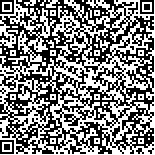下载中心
优秀审稿专家
优秀论文
相关链接
摘要

以广州市番禺区为研究区,构建了相应的城市扩张CA模型,从采样、邻域结构和微观元胞尺度等方面研究了CA模型的敏感性。首先通过改变模型采样比例、样本各个类别的比例等研究样本对模型参数的影响。然后分析不同的邻域结构与模型模拟精度的关系,并从微观尺度分析邻域元胞对中心元胞的影响。最后从空间尺度上分析CA模型在各种不同分辨率下的模拟结果,用景观指数剖析模拟结果的形态,同时在元胞摩尔邻域内分析其3×3邻域的城市发展密度变化情况。实验表明:(1)适当提高采样比例,会得到精度较高的权重,但训练样本中城市用地的比例应该与城市用地的转变量在全区的占比相匹配。(2)不论是采用摩尔邻域还是冯诺依曼邻域,模拟精度均随着空间尺度的增加而降低。在同一空间尺度下,采用摩尔邻域的模拟结果略好。相比冯诺依曼4个邻域元胞,摩尔邻域中的角点对中心元胞具有更大的影响。(3)随着空间分辨的降低,模拟结果的斑块数、斑块密度、聚集度和分形维度值在减少,结构变得简单,而且在微观的摩尔邻域中城市发展密度正在减少,即由高密度向低密度转换。
Land-use change is the hotspot in the research on global change and sustainable development. The change of urban land use has attracted the attention of many scholars. Cellular Automata (CA) model, which is characterized by its powerful space-time dynamic simulation capability, is one of the important tools for urban land-use change. However, existing research does not systematically analyze the effect of sampling, neighborhood, structure, and different resolutions in the CA model. Therefore, this paper intends to carry out systematic sensitivity analysis in an urban CA model to obtain the quantitative accuracy effect by different factors, such as sampling and neighborhood structure, and the optimal model simulation results.
The critical part of CA models is transition rules, which are usually represented by exogenous impact factors such as roads, highways, and towns. These factors (variables) can be addressed by incorporating multicriteria evaluation (MCE) form into CA, which is transformed from MCE into a logistic form to obtain the parameters with a more objective method. This study applies the Monte Carlo method to create different sample ratios that can be used to obtain the weight of the CA model. We also test the CA model's sensitivity by using different neighborhood structures. Landscape metrics are adopted to verify the accuracy of simulation results in different spatial resolutions. These methods can help determine the best combination for the CA model.
After the model is applied to Panyu, the core area of the Pearl River Delta, simulation results can be obtained by using three combinations and processes. First, different sampling ratios and category proportions are used to study the parameter changes under different sample groups. Second, different neighborhood structures are used to find the relationship between model accuracy and neighborhood structure. Finally, the simulation results and changes in different resolutions, landscape index, and 3×3 micro-neighborhood are analyzed. Different simulation results are determined for different combinations of sample ratio, neighborhood, and spatial resolution.
Our findings are as follows:(1) High precision weights can be obtained using high sampling ratios, and the proportion of urban in the sample should be consistent with the change rate in the study area. (2) Regardless of which kind of neighborhood structure is used, the simulation accuracy decreases with low-resolution data. However, the simulation accuracy of the Moore neighborhood will be better than that of the Von Neumann neighborhood. The corner cells have a greater effect than the adjacent cells. (3) The patch number, patch density, concentration, and fractal dimension values fall with low-resolution data. The structure of simulation results becomes simple, and the development density of the Moore neighborhood decreases.

